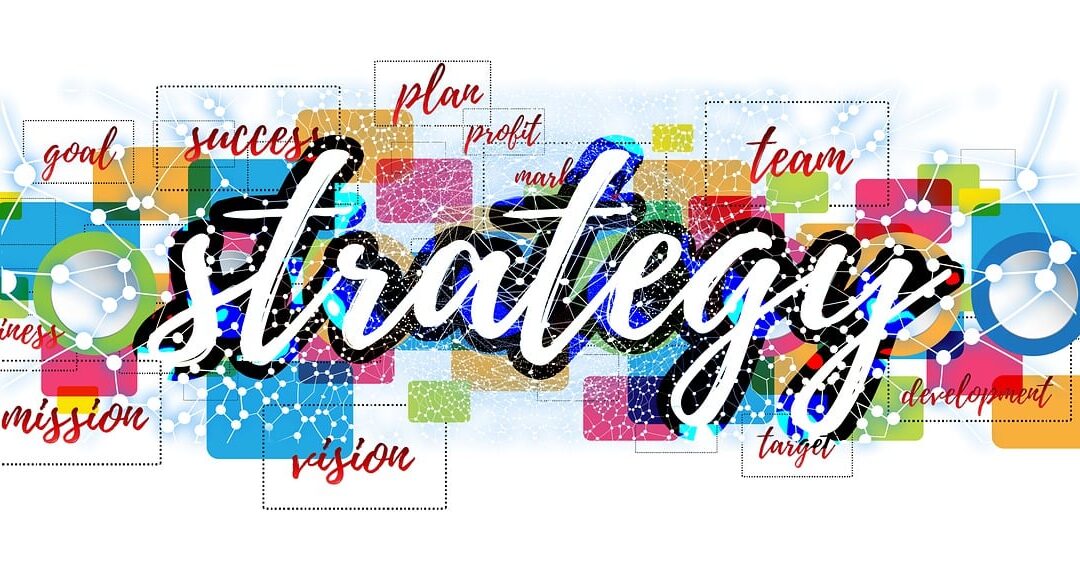
by Atiya Sheikh | Aug 12, 2025 | All Employees, Board Members, Board Trustees, CEO, CFO, COO, CIO, Emerging Leaders, Heads of Divisions, Human Resources (HR), Leadership Development
The Future-Ready Leader: AI, Market Trends, and Continuous Learning
(If you are waiting for a “perfect moment” to learn about AI, you are already behind)
Here is a leadership myth that needs to die:
“I will learn about that once things settle down.”
Spoiler: things will not settle down. The market will keep shifting. AI will keep accelerating. And your competitors will keep experimenting while you are “waiting for the right time.”
What the world’s movers are doing
Goldman Sachs is in its 20th year of the Vice President Leadership Acceleration Initiative (VPLAI) — a programme deliberately designed to grow leaders who can adapt to market shifts in real time. Continuous learning is not a side project. It is the operating system. (Goldman Sachs source)
The Economist highlights that trust and transparency are now as important in tech adoption as the tech itself — because you cannot lead people into a digital future if they do not trust your map.
McKinsey’s research shows that leaders who actively engage with new technologies and market trends are far more likely to translate change into growth rather than disruption. And Gallup’s leadership data is clear: leaders who role-model learning behaviours increase team engagement and innovation capacity by double digits.
If you want to be future-ready, stop “keeping up” and start “getting ahead.” Try this:
- Block “market hours” in your diary – Not for meetings, but for structured scanning of AI tools, competitor moves, and industry reports. Treat it as non-negotiable.
- Run live experiments – Pick one emerging tool or trend each quarter and pilot it in your team. The point is not perfection — it is building muscle for change.
- Make learning visible – Share what you are learning (and struggling with) in your leadership meetings. When leaders are learners, it normalises curiosity.
- Teach forward, not backward – Instead of endlessly reporting on last quarter’s performance, dedicate time each month to explore scenarios for the next two years.
The uncomfortable truth
If your leadership skills are not evolving as fast as the market, you are not leading — you are managing yesterday. The organisations that will win the next decade will be led by people who treat learning as a daily discipline, not an annual retreat topic.
So ask yourself: When my team looks at me, do they see someone preparing them for the future, or someone perfectly equipped for a world that no longer exists?
The Right Conversation Can Change Everything. Let’s Talk.

by Joy Maitland | Aug 12, 2025 | All Employees, Board Members, Board Trustees, CEO, CFO, COO, CIO, Emerging Leaders, General Managers, Heads of Divisions, Human Resources (HR)
Strategic Visibility: Turning Plans into Shared Roadmaps
(If your strategy only lives in the boardroom, you do not have a strategy — you have a secret)
Let me guess: somewhere in your organisation, there is a beautifully formatted strategy document sitting on a shared drive that only a handful of people have opened. And you think that is fine, because “not everyone needs to know everything.”
Here is the uncomfortable truth: when your plans are invisible to most of your people, you are not protecting them from overload. You are depriving them of alignment.
Gallup’s 2025 data makes the case in blunt numbers:
- Only 47% of employees strongly agree they know what is expected of them at work.
- Overall engagement is hovering at 32%.
(Gallup source)
And here is the kicker — when leaders communicate clearly, inspire confidence in the future, and share progress openly, 95% of employees fully trust them. (Gallup source)
Visibility is not just about ‘keeping people informed.’
It is about inviting them into the journey, not as passengers but as navigators. Because when people can see the route, they can adjust their own work to get you there faster.
Try these counter-intuitive visibility moves:
- Post the messy version – Share transformation drafts, not just the final polished roadmap. Let your teams see how strategy evolves and where they can shape it.
- Show the scoreboard – Create a living dashboard that updates in real time, visible to everyone, not just the C-suite.
- Name the risks – Publish the top three uncertainties you are facing. Watch how quickly people start solving them when they are not hidden.
- Shrink the updates – Instead of an annual “state of the nation” presentation, do a five-minute weekly progress video. Short, sharp, human.
Why most leaders resist this:
They fear that showing too much will cause distraction, dissent, or panic. The irony? The opposite is true. When people cannot see the plan, they make up their own — and those versions are rarely flattering or aligned with reality.
Your strategy should be like a shared map, not a locked safe. When every team member can see where you are heading, what has been achieved, and what is next, you get alignment without micromanagement, accountability without coercion, and trust without spin.
So, ask yourself: If I dropped into the break room today and asked any random person to explain our top three priorities, would I like the answer? If not, your roadmap might be beautiful — but it is still hidden.
The Right Conversation Can Change Everything. Let’s Talk.

by Joy Maitland | Aug 12, 2025 | All Employees, Board Members, Board Trustees, CEO, CFO, COO, CIO, Emerging Leaders, General Managers, Heads of Divisions, Human Resources (HR), News & Articles
Balancing Excellence with Sustainability
(Because “high performance” should not mean “high casualties”)
Here is the paradox no one in the boardroom wants to talk about:
Your relentless push for excellence might be the very thing eroding it.
We glorify high standards. We applaud the extra mile. We celebrate the hero who answers emails at 1:00 a.m. But excellence without sustainability is like running a Formula 1 car at top speed without ever changing the tyres — it looks impressive until it does not finish the race.
What the data says
McKinsey’s “Performance through People” research shows that the top-performing companies (“P + P Winners”) do not just demand results — they design systems where employee autonomy, clear challenge from leaders, and inclusive, supportive workplaces all coexist. This combination outperforms high-pressure, low-support environments on both revenue growth and retention.
Goldman Sachs offers an old-school example with a modern twist: their apprenticeship model couples intense performance expectations with coaching, mentoring, and long-term talent development. That mix keeps people sharp and standing.
The uncomfortable truth:
Many leaders think they are building excellence when, in fact, they are building exhaustion. Burnout is not a badge of honour — it is a business risk. The World Health Organization recognises burnout as an occupational phenomenon because it directly undermines performance, creativity, and health.
Three ways to rewrite the playbook:
- Bake recovery into delivery – Treat downtime as part of the performance cycle, not a guilty pleasure.
- Prioritise in public – Share openly what will not be done this quarter so teams know you mean it when you say “focus.”
- Share ownership of excellence – Stop making quality the responsibility of a handful of perfectionists. Train every team member to own standards — and make it safe to flag when those standards are at risk.
Why this matters more than you think
A culture that matches high standards with pacing, wellbeing, and scenario planning sends a signal: We win the long game. And that is where true competitive advantage lives.
The question to wrestle with: If your team sustained your current pace for the next 24 months, would you still have the same people — and the same quality — at the end of it? If you hesitate, your “excellence” might already be unsustainable.
The Right Conversation Can Change Everything. Let’s Talk.

by Atiya Sheikh | Aug 12, 2025 | All Employees, Board Members, CEO, CFO, COO, CIO, General Managers
Building Trust Through Transparent Systems
(Why leaders who “show their workings” win more than just respect)
Here is a question for you: if your organisation’s performance review process was leaked to the press tomorrow, would you be proud—or scrambling to rewrite it?
That is not a hypothetical to make you sweat. It is a reality check. Because the truth is, trust is not built on charisma or charm. Trust is built in the small print—those unglamorous systems that dictate how people are evaluated, rewarded, and promoted.
Transparency is not about telling people everything.
It is about ensuring the “how” is as visible as the “what.” McKinsey’s data is uncomfortably clear: organisations that put people—not paperwork—at the centre of performance management are 4.2 times more likely to outperform their peers, 30% more likely to grow revenue, and see 5% lower attrition. (McKinsey link)
Gallup piles on another uncomfortable truth: employees who receive daily feedback are 2.1 times more likely to trust leadership, and if they believe their leaders genuinely listen, that trust more than doubles. (Gallup link)
Here is the twist:
Transparency is not a “feel-good” exercise. It is a strategic weapon. When you make your systems visible—warts and all—you remove the shadows where suspicion thrives. And when suspicion dies, collaboration flourishes.
If you are serious about this, try these experiments:
- Show the algorithm – Publish the exact performance review criteria. Let your team see how the sausage is made.
- Reverse-engineer decisions – For your next big call, publish the rationale. Every assumption. Every discarded option.
- Test the blindfold – Imagine handing your salary banding guidelines to someone in another department who has never met the individuals in question. If the process is truly clear and objective—based solely on role requirements, market benchmarks, and documented criteria—they should be able to determine the exact same pay range you would. If they cannot, it means your system is open to personal bias and inconsistent application.
- Make “why” a habit – Not just “what we decided,” but “why we decided it.” Every time.
The easy excuse is, “But people will not understand the complexity.” I would argue: if your people cannot understand your systems, that is your system’s fault—not theirs.
Transparency does not make you predictable. It makes you dependable. And in a world where the average worker trusts their employer more than government, media, or NGOs (Edelman Trust Barometer), dependability is the currency of leadership longevity.
So, one final challenge: what would your team say if they saw the inner workings today? If the answer is “they would leave,” you already have your real problem.
The Right Conversation Can Change Everything. Let’s Talk.

by Joy Maitland | Jun 29, 2023 | All Employees, Leadership Development
Leadership is an ongoing journey of growth and development. Whether you are a seasoned executive or a rising star, it is essential to constantly strive for improvement and avoid falling into the trap of complacency. Complacency can hinder your effectiveness as a leader and limit your potential for success. In this article, we will explore five tips to help you overcome complacency and enhance your leadership performance.
1. Embrace a Growth Mindset
A growth mindset is the belief that your abilities and intelligence can be developed through dedication, effort, and continuous learning. Leaders with a growth mindset are open to feedback, view challenges as opportunities for growth, and seek out new knowledge and skills. Embracing a growth mindset allows you to push past your comfort zone, take on new challenges, and continuously improve as a leader. Cultivate a thirst for knowledge and a willingness to adapt and evolve in response to changing circumstances.
2. Set Stretch Goals
Complacency often stems from achieving a certain level of success and then settling into a comfort zone. To break free from this pattern, set stretch goals that push you beyond your current capabilities. These goals should be ambitious but attainable with effort and dedication. By challenging yourself and your team to reach new heights, you create a sense of purpose, motivation, and continuous improvement. As a leader, encourage your team members to set their own stretch goals and support them in achieving those objectives.
3. Seek Feedback and Act on It
Feedback is a powerful tool for growth and improvement. Actively seek feedback from your team, peers, mentors, and even clients or customers. Create a safe and open environment where individuals feel comfortable sharing their honest perspectives. Listen attentively to feedback, both positive and constructive, and use it as an opportunity to reflect on your leadership style and performance. Identify areas where you can enhance your strengths and address areas for improvement. Remember, feedback is a gift that can propel you towards becoming a better leader.
4. Foster a Culture of Innovation
Complacency can stifle innovation and creativity within an organisation. As a leader, it is crucial to foster a culture that encourages and rewards innovation. Create opportunities for your team members to explore innovative ideas, take calculated risks, and challenge the status quo. Embrace diversity of thought and encourage open dialogue and collaboration. By nurturing an environment that values innovation, you inspire your team to think creatively and drive positive change.
5. Develop Your Emotional Intelligence
Emotional intelligence is the ability to understand and manage your own emotions while effectively navigating and influencing the emotions of others. It plays a pivotal role in leadership success. By developing your emotional intelligence, you can build stronger relationships, inspire trust and loyalty, and effectively communicate with your team. Practice self-awareness by reflecting on your emotions, motivations, and reactions in various situations. Cultivate empathy by seeking to understand the perspectives and feelings of others. Develop your interpersonal skills to communicate clearly, resolve conflicts, and motivate your team effectively.
Overcoming complacency is a vital step towards improving your leadership performance. Embrace a growth mindset, set stretch goals, seek feedback, foster a culture of innovation, and develop your emotional intelligence. Remember, leadership is a continuous journey, and by actively working on these areas, you can unlock your full potential as a leader and drive positive change in your organisation. Challenge yourself to take the necessary steps today and become the exceptional leader you aspire to be.
About inemmo
Our vision is to be the catalyst for a new era of exceptional leadership, where individuals and organisations thrive by harnessing their full potential. As a top-tier leadership development and executive coaching and company, we envision a world where every leader possesses the skills, mindset, and courage to drive meaningful change, inspire others, and create lasting impact. Through our transformative programs and unwavering commitment to excellence, we strive to shape a future where extraordinary leadership becomes the standard, igniting a ripple effect of success and empowerment across industries and communities.





